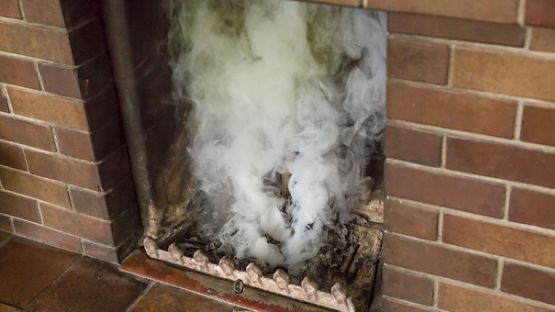Knowing how to prepare your home or cottage for winter - in addition to having great cottage or cabin insurance – can help provide comfort and peace of mind. Simple steps like sealing drafts, adjusting your thermostat, and optimizing your appliances can help you stay cozy while lowering your utility bills.
Here are some energy-saving safety tips for cottages to help you prepare for winter:
Seal drafts and check insulation
One of the most effective ways to reduce heat loss and save on energy costs is by sealing drafts around your home. Start by inspecting the caulking around your windows and weather stripping on doors. If either is cracked or dry, replace them before the temperature drops.
Drafts can also occur in less obvious places, such as baseboards, attics, and crawl spaces. A simple trick to detect drafts is to hold a tea candle near potential gaps–if the flame flickers, it’s time to seal the area. Sealing drafts is an important part of how to prepare your home or cottage for winter, as it helps maintain warmth and energy efficiency.
If insulating your home isn’t in the budget, focus on sealing exits where cold air can enter. Even small changes like filling gaps around windows and doors can make a noticeable difference in keeping your home warm.
Use a programmable thermostat
Investing in a programmable thermostat is a smart way to manage your home’s heating more efficiently. Set the thermostat to lower the temperature while you’re asleep or away during the day.
If you don’t have a programmable model, you can still adjust a manual thermostat to form good habits. Lowering your home’s temperature during times of low activity can save on heating bills without sacrificing comfort.
If possible, control the temperature by room or area of the house. Close off unused spaces like guest rooms or dining areas, keeping the doors closed and the heat down in those areas. This focused approach will help you avoid wasting energy in parts of the home you don’t regularly use.
Adjust the water heater
Your water heater can be a source of unnecessary energy consumption. Most water heaters are set to sixty degrees Celsius by default, but you can safely lower the temperature to fifty-four degrees in most cases, according to the Canada Safety Council. Adjusting your water heater is not only energy-efficient but also a good safety tip for cottages, ensuring your hot water supply is safe and reliable throughout the winter.
Just be sure to check and follow your local building and plumbing codes to avoid going too low, as this can cause bacterial growth in the tank, which can pose health risks.
Optimize ceiling fans and appliances
Did you know your ceiling fans can help with heating? Switch your fans to rotate clockwise at a low speed during the winter to push warm air back down into the room. This simple adjustment can help distribute heat more evenly throughout your living spaces.
Additionally, it’s a good idea to avoid using bathroom exhaust fans after a shower. Instead, keep the door open to let the warm, humid air naturally warm the surrounding areas.
Bundle up with warm layers
Sometimes, the simplest energy-saving tips for winter are the most effective. Bring out the wool blankets, cozy sweaters, and warm socks to stay comfortable without cranking up the heat. Wearing layers can help maintain your core temperature, allowing you to keep your thermostat a few degrees lower while still feeling warm and cozy indoors.
Stay warm and protected
By following these winter cottage tips, you’ll keep your home warm, energy-efficient, and safe. Winterizing your cottage with these strategies can also help reduce risks associated with cold weather, which is important for your cottage or cabin insurance. From sealing drafts to optimizing your heating system, these small changes will make a big difference in your comfort and savings throughout the winter season.
Sources:
Government of Canada - Winter is coming: Top tips to heat your home for less
Government of Canada – Water temperature and burns/scalds
Canada Safety Council - Heated debate about hot water













